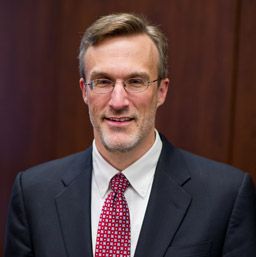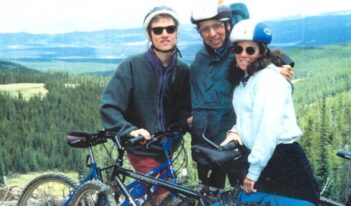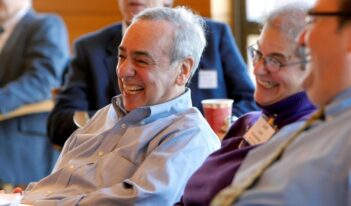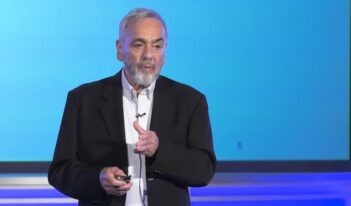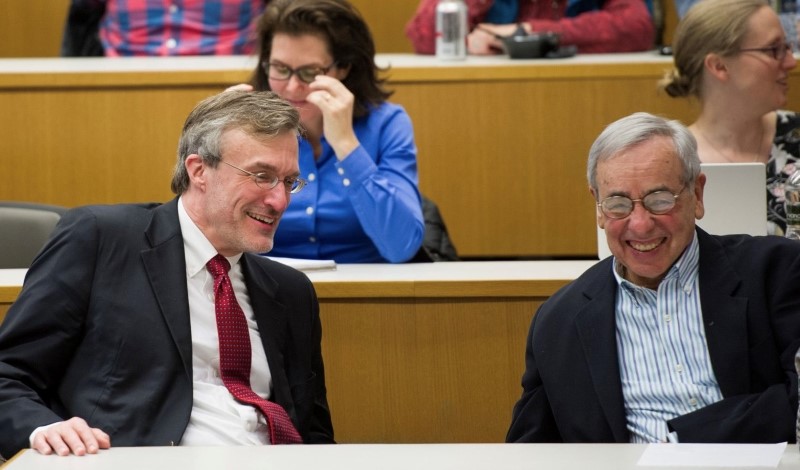
Through his scholarly impact and his infectious positive attitude, Howard taught all of us to work toward a better tomorrow.
Howard Kunreuther was a self-described “irrational economist.” This label rang true not because Howard was anything less than a clear-headed, careful, and analytical economist. Rather, it was because he was a pioneer in the field of behavioral economics. That field has uncovered how people can think and act predictably in ways that are deemed irrational—at least in the sense that they can depart from some of the expectations that follow from the theory-driven, utility-maximizing rationality that has long dominated the discipline of economics.
As much as Howard liked to distinguish himself from other economists by using the “irrational” label, his many important research contributions can be characterized by another counter-conventional label. Instead of contributing to a “dismal science,” as economics is sometimes described, I like to think of Howard as having been a leading practitioner of “hopeful science.”
This is not a label that I recall Howard ever using to describe his work. But to me, it captures the pragmatic and optimistic essence running through his expansive and influential body of research, not to mention his lifetime of contributions as a teacher, mentor, colleague, and friend.
Howard was not interested in making advances in knowledge for knowledge’s sake alone. He made many such advances, to be sure. But he saw his empirical discoveries as a means to making the world a better place. As he once put it in work published in the 1970s, “Only by learning more about the behavioral processes of people under conditions of risk and uncertainty can we develop meaningful public policies for coping with these problems.”
Near the end of his life, a biographical profile in the journal Risk Analysis quoted Howard as putting this point even more emphatically: “It is imperative to take into account the way individuals process information and make choices. Strategies that appear to be reasonable to economists may not work well in practice!”
These quotations capture the core pragmatism, and hopefulness, underlying Howard’s life’s work. If only we can figure out how people think and act, then we can solve the world’s big problems, especially those related to catastrophic risk.
Howard’s body of research exudes hopefulness. I recently looked back at his 10 most-cited publications—what might be thought of, at least by one measure, the most consequential of his contributions to scientific knowledge. What is striking is how each of these works, along with many other papers and books of his, offered real-world solutions that followed from his theoretical and empirical analysis.
Nobel laureate Kenneth Arrow wrote in the foreword to Howard’s 1978 book, Disaster Insurance Protection: Public Policy Lessons, that “the power and novelty of the study” stemmed from both its “implications for theoretical research” and its “policy implications”— a description that applies across the sweep of Howard’s work.
Howard’s most-cited works spanned decades. They included his book with the foreword by Kenneth Arrow, published in 1978. But they also included:
- a 1982 co-authored paper, “Sources of Bias in Assessment Procedures for Utility Functions,” in Management Science;
- a 1996 article, “Mitigating Disaster Losses Through Insurance,” in the Journal of Risk and Uncertainty; and
- a 2018 paper with several coauthors, “Integrating Human Behaviour Dynamics Into Flood Disaster Risk Assessment” in Nature Climate Change.
These and other studies of his contained within them many important solutions that deserve to be kept at the forefront of policy deliberations as much today as ever before. After all, the world today continues to face catastrophic risks from industrial activity, contagious pathogens, terrorist violence, earthquakes, and other natural disasters. The losses people suffer from climate-exacerbated floods, storms, fires, and extreme heat are only increasing.
In the face of these ever-present and growing hazards, Howard’s research provides the basis for positive steps to take to make lives better and more secure. A perusal of his most-cited work—along with other studies he produced—generates at least 12 actions for public and private decision-makers to bear in mind:
- Improve Risk Communication. Policymakers should ensure that individuals understand the risks they face and the benefits of taking preventive measures.
- Use Risk-Based Flood Insurance. Risk-based premiums are key to the U.S. National Flood Insurance Program, with means-tested vouchers or other subsidies needed to help low-income households afford flood insurance.
- Encourage Mitigation Investments. Financial incentives, such as tax rebates, grants, and insurance premium discounts, should be considered to encourage homeowners and businesses to invest in risk mitigation measures, such as reinforced construction and earthquake retrofitting.
- Use Behavioral Nudges. Public policies can help by establishing default options for insurance coverage or by framing choices about risk mitigation in ways that highlight their benefits to individuals.
- Establish Public-Private Partnership To share the burden of disaster risk management, collaboration is needed between government agencies, private insurers, and other affected entities to develop effective strategies and ensure adequate funding.
- Implement Catastrophe Bonds and Insurance-Linked Securities. To manage large-scale risks, financial instruments such as catastrophe bonds and insurance-linked securities can be required for some endeavors, spreading the financial burden of catastrophic events more broadly through private markets.
- Strengthen Building Codes and Land-Use Planning. Up-to-date building codes and land-use planning regulations, combined with strong enforcement of these rules, can ensure that physical infrastructure is built to withstand natural disasters and that development patterns take risks suitably into account.
- Create Multi-Year Insurance Policies. Policies that provide continuous coverage over a longer period can prevent lapses in coverage and better align incentives with the need for long-term planning.
- Promote Community-Based Insurance Programs. Community-based insurance programs that pool resources can increase access to insurance and encourage collective investment in mitigation measures.
- Pursue Adaptive Risk Management. In a changing world, risk managers and policymakers must be flexible and willing to adjust as new information becomes available.
- Strengthen Emergency Response and Recovery Plans. Risk prevention is vital, but so too are robust plans and resources to respond after disaster strikes.
- Incorporate Climate Change Projections into Planning. Risk management today can only be responsibly conducted by integrating climate change projections into risk assessments and planning.
Actions and solutions like these sprang from Howard’s work. They represented rays of hope. And they should be included in any remembrance of Howard’s life and legacy.
Also worth remembering, of course, is the way that Howard’s hopefulness shone through the personal qualities that other colleagues have noted in their tributes published in this series in The Regulatory Review: his exceptional energy, curiosity, compassion, and collaborative spirit.
Although I first knew of Howard only by having read some of his scholarship when I was in graduate school, I later had the good fortune to connect with him in person through seminars and meetings of his and mine, respectively, at Wharton and Harvard. It then became one of my greatest privileges to count him as a colleague after I left the Harvard Kennedy School faculty nearly twenty years ago to join Penn’s law school faculty.
Over the years, Howard and I had more interactions than I can remember. He and I collaborated on a chapter on insurance and regulatory excellence for a book I edited. I then had the opportunity to contribute a chapter to his co-edited book, The Future of Risk Management. I also guest-lectured in his classes a number of times, and he spoke at dialogue sessions that we convened through the Penn Program on Regulation.
Not long after I arrived at Penn, he and I also embarked on what would be a longstanding university-wide seminar series on risk regulation, jointly sponsored by the Wharton Risk Center and the Penn Program on Regulation. For years, these monthly seminars brought together faculty, fellows, and students across campus to learn about the latest research findings and policy developments on the most serious—and, one might even say, dismal—of issues, such as industrial accidents, terrorism risks, and the ravages of climate change.
Notwithstanding the subject matter’s gravity, each month’s seminar was, at least for me, an occasion for joy, as it allowed me a chance to see and visit with Howard. He exuded hopefulness in his questions and comments at these seminars. The conversations he sparked in these settings always exhibited a faith that we could find solutions to what otherwise might seem society’s most intractable problems.
After each seminar, Howard and I, along with a varying cast of colleagues and students, would take our guest speakers out to dinner. At a restaurant across the street from the Wharton School, we would gather at a long, narrow table that was, unfortunately, conducive mainly to separate clusters of conversions between individuals sitting in close proximity to each other. At some point during each meal, Howard would invariably find a way to capture everyone’s attention and pose a thought-provoking question that brought the large gathering together in conversation.
These were magical moments. They also made for apt metaphors for what Howard did time and again throughout his career. He brought people together. He bridged divides. He created untold opportunities for collective learning. And through his incessant zest for knowledge and his undying faith in a better tomorrow, he offered us hope.
May we always learn from and keep following the path established by Howard Kunreuther’s brand of hopeful science.
This essay is part of a series celebrating the life and scholarship of Howard Kunreuther, titled “Commemorating Howard Kunreuther.”

